Atomic Habits: An Easy & Proven Way to Build Good Habits & Break Bad Ones
4.8
-
128,477 ratings
The #1 New York Times bestseller. Over 15 million copies sold!
Tiny Changes, Remarkable Results
No matter your goals, Atomic Habits offers a proven framework for improving--every day. James Clear, one of the world's leading experts on habit formation, reveals practical strategies that will teach you exactly how to form good habits, break bad ones, and master the tiny behaviors that lead to remarkable results.
If you're having trouble changing your habits, the problem isn't you. The problem is your system. Bad habits repeat themselves again and again not because you don't want to change, but because you have the wrong system for change. You do not rise to the level of your goals. You fall to the level of your systems. Here, you'll get a proven system that can take you to new heights.
Clear is known for his ability to distill complex topics into simple behaviors that can be easily applied to daily life and work. Here, he draws on the most proven ideas from biology, psychology, and neuroscience to create an easy-to-understand guide for making good habits inevitable and bad habits impossible. Along the way, readers will be inspired and entertained with true stories from Olympic gold medalists, award-winning artists, business leaders, life-saving physicians, and star comedians who have used the science of small habits to master their craft and vault to the top of their field.
Learn how to:
- make time for new habits (even when life gets crazy);
- overcome a lack of motivation and willpower;
- design your environment to make success easier;
- get back on track when you fall off course; ...and much more.
Atomic Habits will reshape the way you think about progress and success, and give you the tools and strategies you need to transform your habits--whether you are a team looking to win a championship, an organization hoping to redefine an industry, or simply an individual who wishes to quit smoking, lose weight, reduce stress, or achieve any other goal.
Kindle
$13.99
Available instantly
Audiobook
$0.00
with membership trial
Hardcover
$13.79
Paperback
$15.00
Ships from
Amazon.com
Payment
Secure transaction
ISBN-10
0735211299
ISBN-13
978-0735211292
Print length
320 pages
Language
English
Publisher
Avery
Publication date
October 16, 2018
Dimensions
6.33 x 1.07 x 9.29 inches
Item weight
1.16 pounds
Popular Highlights in this book
Goals are about the results you want to achieve. Systems are about the processes that lead to those results.
Highlighted by 100,601 Kindle readers
Decide the type of person you want to be. Prove it to yourself with small wins.
Highlighted by 99,239 Kindle readers
Goals are good for setting a direction, but systems are best for making progress.
Highlighted by 88,302 Kindle readers
The ultimate form of intrinsic motivation is when a habit becomes part of your identity. It’s one thing to say I’m the type of person who wants this. It’s something very different to say I’m the type of person who is this.
Highlighted by 87,769 Kindle readers
Product details
ASIN :
B07D23CFGR
File size :
8713 KB
Text-to-speech :
Enabled
Screen reader :
Supported
Enhanced typesetting :
Enabled
X-Ray :
Enabled
Word wise :
Enabled
Editorial Reviews
Wall Street Journal bestseller USA Today bestseller Publisher's Weekly bestseller One of Fast Company's 7 Best Business Books of 2018 One of Business Insider's Best Self-Help Books of 2018
"A supremely practical and useful book. James Clear distills the most fundamental information about habit formation, so you can accomplish more by focusing on less." -Mark Manson, #1 New York Times best-selling author of The Subtle Art of Not Giving a F*ck
“James Clear has spent years honing the art and studying the science of habits. This engaging, hands-on book is the guide you need to break bad routines and make good ones.” -Adam Grant, New York Times best-selling author of Originals, Give and Take, and Option B with Sheryl Sandberg
"A special book that will change how you approach your day and live your life." -Ryan Holiday, bestselling author of The Obstacle is the Way and Ego is the Enemy
“As a physician attempting to help my patients build healthy habits to decrease and reverse chronic disease, Atomic Habits is the playbook I have been searching for. Not only does the book offer actionable items I can teach my patients, I can refer them to read and implement the ideas themselves. The format is powerful and simple. This should be taught in all medical schools.” -Laurie Marbas, MD, United States Air Force veteran
“Atomic Habits was a great read. I learned a lot and think it’ll be helpful to a lot of people.” —Gayle King, co-anchor of CBS This Morning and editor-at-large for O, The Oprah Magazine
“Useful new book” –Wall Street Journal
“In Atomic Habits, Clear will show you how to overcome a lack of motivation, change your environment to encourage success, and make time for new (and better) habits. –Glamour.com
“Atomic Habits is a great book for anyone who is frustrated with the way they can’t seem to kick that one (or two dozen) bad habit(s) and wants to finally achieve health, fitness, financial freedom, great relationships, and a good life.” –Medium.com
“Excellent. Well worth the read.” –Benjamin Hardy, Inc.com
Sample
Introduction
My Story
ON THE FINAL day of my sophomore year of high school, I was hit in the face with a baseball bat. As my classmate took a full swing, the bat slipped out of his hands and came flying toward me before striking me directly between the eyes. I have no memory of the moment of impact.
The bat smashed into my face with such force that it crushed my nose into a distorted U-shape. The collision sent the soft tissue of my brain slamming into the inside of my skull. Immediately, a wave of swelling surged throughout my head. In a fraction of a second, I had a broken nose, multiple skull fractures, and two shattered eye sockets.
When I opened my eyes, I saw people staring at me and running over to help. I looked down and noticed spots of red on my clothes. One of my classmates took the shirt off his back and handed it to me. I used it to plug the stream of blood rushing from my broken nose. Shocked and confused, I was unaware of how seriously I had been injured.
My teacher looped his arm around my shoulder and we began the long walk to the nurse’s office: across the field, down the hill, and back into school. Random hands touched my sides, holding me upright. We took our time and walked slowly. Nobody realized that every minute mattered.
When we arrived at the nurse’s office, she asked me a series of questions.
“What year is it?”
“1998,” I answered. It was actually 2002.
“Who is the president of the United States?”
“Bill Clinton,” I said. The correct answer was George W. Bush.
“What is your mom’s name?”
“Uh. Um.” I stalled. Ten seconds passed.
“Patti,” I said casually, ignoring the fact that it had taken me ten seconds to remember my own mother’s name.
That is the last question I remember. My body was unable to handle the rapid swelling in my brain and I lost consciousness before the ambulance arrived. Minutes later, I was carried out of school and taken to the local hospital.
Shortly after arriving, my body began shutting down. I struggled with basic functions like swallowing and breathing. I had my first seizure of the day. Then I stopped breathing entirely. As the doctors hurried to supply me with oxygen, they also decided the local hospital was unequipped to handle the situation and ordered a helicopter to fly me to a larger hospital in Cincinnati.
I was rolled out of the emergency room doors and toward the helipad across the street. The stretcher rattled on a bumpy sidewalk as one nurse pushed me along while another pumped each breath into me by hand. My mother, who had arrived at the hospital a few moments before, climbed into the helicopter beside me. I remained unconscious and unable to breathe on my own as she held my hand during the flight.
While my mother rode with me in the helicopter, my father went home to check on my brother and sister and break the news to them. He choked back tears as he explained to my sister that he would miss her eighth-grade graduation ceremony that night. After passing my siblings off to family and friends, he drove to Cincinnati to meet my mother.
When my mom and I landed on the roof of the hospital, a team of nearly twenty doctors and nurses sprinted onto the helipad and wheeled me into the trauma unit. By this time, the swelling in my brain had become so severe that I was having repeated post-traumatic seizures. My broken bones needed to be fixed, but I was in no condition to undergo surgery. After yet another seizure—my third of the day—I was put into a medically induced coma and placed on a ventilator.
My parents were no strangers to this hospital. Ten years earlier, they had entered the same building on the ground floor after my sister was diagnosed with leukemia at age three. I was five at the time. My brother was just six months old. After two and a half years of chemotherapy treatments, spinal taps, and bone marrow biopsies, my little sister finally walked out of the hospital happy, healthy, and cancer free. And now, after ten years of normal life, my parents found themselves back in the same place with a different child.
While I slipped into a coma, the hospital sent a priest and a social worker to comfort my parents. It was the same priest who had met with them a decade earlier on the evening they found out my sister had cancer. As day faded into night, a series of machines kept me alive. My parents slept restlessly on a hospital mattress—one moment they would collapse from fatigue, the next they would be wide awake with worry. My mother would tell me later, “It was one of the worst nights I’ve ever had.”
Read more
About the authors
James Clear
James Clear is a writer and speaker focused on habits, decision making, and continuous improvement. He is the author of the #1 New York Times bestseller, Atomic Habits. The book has sold over 5 million copies worldwide and has been translated into more than 50 languages.
Clear is a regular speaker at Fortune 500 companies and his work has been featured in places like Time magazine, the New York Times, the Wall Street Journal and on CBS This Morning. His popular "3-2-1" email newsletter is sent out each week to more than 1 million subscribers.
Read more
Reviews
Customer reviews
4.8 out of 5
128,477 global ratings
Haical Sajovic Haddad
5
Updated review after 100 days building small yet lasting habits.
Reviewed in the United States on October 18, 2018
Verified Purchase
I previously wrote this review right after reading the book. Today, February 15th, after applying James’s system for 100 days on a few tiny habits, I feel compelled to share updates with you because they have sincerely worked.
I will divide the review into 5 parts. The first part is a summary of the book with short excerpts highlighted while taking notes. Next, I hope to share pieces of advice that have motivated me while building new habits. Following that, I will share how I implemented the first 3 habits throughout these months. Then, some thoughts to whom I would recommend reading the book. Last, there are 4 complementary readings.
SUMMARY
[Introduction] James starts by sharing personal strategies he implemented to recover from a serious accident in high school. That event forced him to improve the quality of his routine to get his life in order, coming to the conclusion that “we all deal with setbacks, but in the long run, the quality of our lives often depends on the quality of our habits. With the same habits, you will end up with the same results. But with better habits, anything is possible.”
[Section I : The Fundamentals]
[Chapter 1] Here we learn the power of compounding effect: changes that seem small and unimportant at any given day will compound into remarkable results if we are willing to stick with them for months and years. James explains that “breakthrough moments are often the result of many previous actions, which build up the potential required to unleash a major change.” Comparing to habits, he shows that bamboo can barely be seen during the first couple of years while the roots grow underground before exploding for almost 100 feet into the air in a few weeks. From that perspective, we come to understand the best outcomes are generally delayed.
[Chapter 2] Based on a 3-layer concentric circle behavior change model—divided into outcome change, process change, and identity change—James explains that we should pay attention to our inner identity by focusing on beliefs, assumptions, and values. “Many people begin the process of changing their habits by focusing on what they want to achieve. This leads us to outcome-based habits. The alternative is to build identity-based habits. With this approach, we start by focusing on who we wish to become.” The strongest changes, then, happen from inside out, starting from our identity, passing through the process, and ultimately changing the outcome.
[Chapter 3] In this chapter we are introduced to a 4-step framework, which is composed of cue, craving, response, and reward. James calls it 'The 4 Laws of Behavior Change'. He then explains that we can think of each law as a lever that influences our behavior—when the levers are in the right positions, they create good habits effortless whereas when they are in the wrong position, it is nearly impossible. Through examples, he explains that “the cue triggers a craving, which motivates a response, which provides a reward, which satisfies the craving and, ultimately, becomes associated with the cue.” Together they create a habit loop that, when repeated many times, habits become automatic.
[Section II : Make It Obvious]
[Chapter 4] A primer on how cues play a crucial role in predicting habit formation without consciously thinking about the outcomes. Once our habits become so common, the cues associated with them become essentially invisible because they are deeply encoded. If we want to create better habits, a good idea is to be aware of the cues. James finishes up by sharing a strategy called 'Habits Scorecard'—a simple exercise to become more aware of our behavior on a daily basis. We first write down a chronological list of our daily habits and, once we have a full list, we score each habit as an effective, ineffective, or neutral habit. Besides noticing what is actually going on, we can notice if certain behaviors help us become the type of person we wish to be.
[Chapter 5] The cues that can trigger a habit come in a wide range of forms, and the 2 most common cues are time and location. When we make a specific plan for when and where we will perform a new habit, we are more likely to follow through. Stacking our habits by pairing a new habit with a current habit is a form to connect our behavior to our own advantage. An example when building a daily journaling habit would be: “after I pour my cup of coffee each morning, I will journal for 5 minutes.”
[Chapter 6] This chapter shows how our environment plays a crucial role in defining habit behaviors. “Given that we are more dependent on vision than any other sense, it should come as no surprise that visual cues are the greatest catalyst of our behavior.” To build good habits, then, we should either make desirable cues obvious in our environment or build new habits in a new environment to avoid fighting against old ones.
[Chapter 7] One of the most practical ways to break a bad habit is to reduce exposure to the cue that causes it. As James points out, “it is easier to avoid temptation than resist it.”
[Section III : Make It Attractive]
[Chapter 8] James explains how the modern food industry has created products that are more attractive and addictive to consumers, and by doing so he shows that the more attractive an opportunity is, the more likely it is to become habit-forming. Every behavior that is highly habit-forming tends to be associated with higher levels of dopamine. It is the anticipation of a reward that motivates us to take action. “Temptation bundling is one way to make your habits more attractive. The strategy is to pair an action you want to do with an action you need to do.”
[Chapter 9] “We tend to adopt habits that are praised and approved of by our culture because we have a strong desire to fit in and belong to the tribe.” That said, it is common to pick up habits and behaviors from our parents, peers, and colleagues. There is also a tremendous internal pressure to comply with the norms of the tribe. And, finally, we try to copy the behavior of successful people because we desire success ourselves. One of the best strategies to build better habits is to join a culture where the desired behavior is the normal behavior.
[Chapter 10] To avoid unnecessary and detrimental cravings, we should highlight the benefits of avoiding a bad habit by making it seem unattractive. “Habits are unattractive when we associate them with negative feelings.”
[Section IV : Make It Easy]
[Chapter 11] “All habits follow a similar trajectory from effortful practice to automatic behavior, a process known as automaticity. Automaticity is the ability to perform a behavior without thinking about each step, which occurs when the nonconscious mind takes over.” The key component is to pay close attention to the frequency we perform a habit, not much for how long we have been practicing it.
[Chapter 12] Since every action requires a certain amount of energy, we are motivated to do what is easy. By contrast, the more energy required, the less likely it is to occur. “You don't actually want the habit itself. What you really want is the outcome the habit delivers. The greater the obstacle, the more friction there is between you and your desired end state.” That is why we should reduce the friction associated with our habits by creating a prosperous environment to make future actions easier.
[Chapter 13] There are decisive moments that deliver an outsized impact every single day. As James puts, these decisive moments are a fork in the road, sending us in the direction of a productive path or an unproductive one. To avoid procrastination, the skill of 'Showing Up' says that we should start a new habit by taking baby steps, making it as easy as possible to take action. “A new habit should not feel like a challenge. The actions that follow can be challenging, but the first 2 minutes should be easy. What you want is a gateway habit that naturally leads you down a more productive path.” He calls it the 'Two-Minute Rule', meaning that new habits should take less than 2 minutes to do in the beginning. Once the habit is established we can improve and master the finer details.
[Chapter 14] In order to keep bad habits away is to make them difficult in the first place. There are 2 interesting strategies to improve our future behavior. [1] Make good choices in advance before we can fall victim to temptation in the future. James gives a personal example by sharing that whenever he is looking to cut calories he will ask the waiter to split his meal and box half of it to go before the meal is served. If, however, he waits for the meal to be served and tries to eat just half, that would never happen. [2] Make onetime actions that can automate our future habits and deliver increasing returns over time such as buying a good water filter, unsubscribing from unwanted emails, moving to a friendlier neighborhood, buying a standing desk, or setting up automatic bill pay.
[Section V : Make It Satisfying]
[Chapter 15] We should make sure to feel immediately satisfied after performing a new habit to increase the odds that the behavior will be repeated next time. “The human brain has evolved to prioritize immediate rewards over delayed rewards.” For that, we can add a little bit of immediate pleasure to the habits that pay off in the long-run.
[Chapter 16] Here we learn how to measure our progress by tracking our habits. The immediate satisfaction it delivers—as mentioned earlier in Chapter 15—is one of the many benefits that standout. Besides that, James says, “when we get a signal that we are moving forward, we become more motivated to continue down that path.” The most basic format to track our habits is to get a calendar and mark an X each time we stick with our routine. One of the most important passages of the entire book is as follows: “If you miss one day, try to get back into it as quickly as possible. The first mistake is never the one that ruins you. It is the spiral of repeated mistakes that follows. Missing once is an accident. Missing twice is the start of a new habit. This is a distinguishing feature between winners and losers. Anyone can have a bad performance, a bad workout, or a bad day at work. But when successful people fail, they rebound quickly.”
[Chapter 17] In order to prevent bad habits and/or eliminate unhealthy behaviors, James says that we could either add an instant cost to the action or make it painful. A habit contract is also another strategy to hold our accountability: “It is a verbal or written agreement in which you state your commitment to a particular habit and the punishment that will occur if you don't follow through. Then you find one to two people to act as your accountability partners and sign off on the contract with you.”
[Section VI : Advanced Techniques]
[Chapter 18] We learn how to distinguish habits when genes may or may not influence our performance especially for competitive activities. “One of the best ways to ensure your habits remain satisfying over the long-run is to pick behaviors that align with your personality and skills.” James proposes us to set some time apart to explore new activities in the beginning, before shifting our focus to exploit them thoroughly.
[Chapter 19] When we find the sweet spot of our ability we tend to learn best and fastest. The ‘Goldilocks Rule’ states that "humans experience peak motivation when working on tasks that are right on the edge of their current abilities. Not too hard. Not too easy. Just right.”
[Chapter 20] One downside of certain habits, James explains, is that we may stop paying attention to the little details and errors. To counterbalance that we should review and reflect on the process over time to remain conscious of our own performance. Using a simple chart to convey his message, we learn that “the process of mastery requires that you progressively layer improvements on top of one another, each habit building upon the last until a new level of performance has been reached and a higher range of skills has been internalized.”
PERSONAL THOUGHTS
Reading the book twice helped me take better notes and capture details. In the meantime, I thought about 3 simple strategies that could improve our adherence to new habits. Let me share these strategies here with you, and in the following section, I will describe how I managed to cultivate the first 3 new habits upon reading the book—following the system proposed by James together with these 3 strategies.
[1] The first strategy is about determining a 'commitment time frame' to avoid excuses during this initial trial period. A 1-month time frame is a fair commitment, choosing to start on the first day of the month to practice it every single day for a full month. Just at the end of the period, I will take the time to reflect and evaluate the pros and cons.
[2] The next one is to choose only 1 new habit each month. In doing so we become familiar with the practice intentionally while we develop a sense of purpose.
[3] Last, during the first month of any new habit, I noticed that if I spend time exploring the details and the benefits, my motivation stays high. It doesn't only help us create better practices, but it is also inspiring to learn from others who have succeeded previously by adding the same habit into their lives. Podcasts, articles, videos, books, online courses, tutorials, and blog posts are all good sources.
IMPLEMENTATION OF NEW HABITS
[Nov 1, 2018] I had been wanting to journal on a daily basis for many years but that had never happened. Although I have carried a notebook with me for quite a while, it has never worked as a real journal—a daily routine, when we sit down and write personal thoughts, intentions, and reflections at around the same time. Instead, it has been mostly used to take notes during meetings, to write down ideas and thoughts, to express travel memories, and to doodle. Today, after 3+ months, I haven't looked back once, and still can't believe it took me that long to start this daily habit. During the first month, I read blog posts, watched videos, and even read a short and inexpensive book to foster my creativity.
[Dec 1, 2018] I have been impressed by the physical capabilities we can develop through body movement. Although yoga has been a special part of my life since I was 18, I hadn't given proper attention to handstands. But now, after 2+ months practicing it every day, it is rewarding to see improvements on a weekly basis. Again, I definitely recommend watching videos and reading tutorials to find your favorite method. This is the perfect habit to stack at the end or in the middle of any physical movement practice you may enjoy.
[Jan 1, 2019] By now we know the benefits of cold showers—ranging from healthier skin appearance all the way to a more resilient perspective of the world. I had previously taken cold showers for 3 months in 2017, but it was a “goal” mindset instead of a “habit” mindset. After that trial I set aside and, although I have kept taking cold showers once or twice a week since then, I wished cold showers was the default mode. Now, after 1+ month, I can't see myself taking warm showers. After all, it is about intention. Again, we can learn uncountable benefits of cold showers by reading success stories. One of my inspirations was Wim Hof. It isn't comfortable in the beginning of any chosen day, but after 3-4 minutes, both my breath and thoughts calm down.
Putting them together, these 3 habits don't take more than 30 minutes of my day. While I spend about 10 minutes journaling and 10 more minutes practicing handstands, I save 5 minutes taking cold showers because I won't stay any longer than necessary.
RECOMMENDATION
[1] First, if you have watched videos, listened to podcasts, read articles and books on habit formation and, after all that, you feel satisfied, then, please, save your money and time.
[2] However, if you are like me, that even after reading a few books on building habits and having successfully added good habits to your life, feel that there is still room for improvement, this book can be a terrific addition.
[3] Last, if you haven't spent much time and energy discovering a good system to build lasting habits while breaking bad ones, please, read this book.
COMPLEMENTARY READINGS
[1] Game Changers, by Dave Asprey, exposed me to a wealth array of ideas/habits/tools that have helped me decide which new habit to build next. The book is divided into 46 laws.
[2] Essentialism, by Greg McKeown, helped me focus on less but more important tasks, giving clarity to what matters most. This is especially interesting to break bad habits.
[3] The Talent Code, by Daniel Coyle, brought more motivation when learning new skills based on the assumptions that we develop new talents through deep practices, finding our ignition identity, and having the right coach to guide us genuinely. I read it many years ago, then, a few years back, I read his following book called The Little Book of Talent—which is perhaps even more to the point.
[4] The Systems View of Life, by Fritjof Capra, enlightened my perspectives on how nature and living beings are systematically integrated. It is a profound and slightly academic book that can complement Atomic Habits especially to tie together the 4-step framework into the feedback loop system.
I sincerely hope you, too, have fun while building new habits.
Take care,
Haical
Read more
16 people found this helpful
Mike Pritchard
5
Atomic Habits will change your life! 9 takeaways:
Reviewed in the United States on May 30, 2019
Verified Purchase
Atomic Habits by James Clear is one of those rare books that I immediately read twice in a row. It is filled with dozens of science-backed and actionable nuggets of wisdom. Do you want to improve any habits in your life? I heartily recommend Atomic Habits to you! We are all driven by our habits - many of which are unconscious. Below are 9 quotes and takeaways from this life-changing book:
-
"Getting 1 percent better every day counts for a lot in the long-run." Atomic Habits explains why the little things you do every day matters. Your little habits matter. It may not seem like a big deal to skip a workout or to be kind, but it is a big deal. Imagine if you improved your habits by only 1% every day. You'd be dramatically a different person in a year. Then imagine if you let your habits decline by 1% every day. You'd be in a much worse spot in life overall a year from now. Your little habits - atomic habits - count for a lot in the long run. What little habits are you improving upon (or neglecting...) today?
-
"You do not rise to the level of your goals. You fall to the level of your systems." This is such an important point in the book. Oftentimes we focus on goals in our life, while neglecting to focus on the systems that help us achieve goals. As an example, I had a friend who had the goal to complete a triathlon. He achieved this goal! And then he quit working out for the next year and got out of shape... He was so focused on achieving a goal that he neglected his underlying systems of being healthy. Goal achievement can actually set us back if we don't get set up sustainable systems. Get the systems right and then we'll indeed also achieve our goals. Systems > Goals.
-
"Every action you take is a vote for the type of person you wish to become. No single instance will transform your beliefs, but as the votes build up, so does the evidence of your new identity." I love this quote from the book. Every action - every habit - you take casts a vote for the type of person you want to become. Do you want to be a more organized person? When you develop habits and systems that organize your life, you are casting votes for thinking of yourself as an organized person. You think to yourself, "hey, I'm an organized person." And then you reinforce that belief with your habits and actions - a virtuous cycle! The flip side of this can be true too. What if you often show up late to meetings? You're casting votes that may make you think "well, I'm just a person that is always late." An un-virtuous cycle. Be careful to make sure that your habits and ultimately your beliefs cast votes for the type of person you want to become and, indeed, who you truly are.
-
"How long does it actually take to form a new habit? You just need to get your reps in." Atomic Habits answers the question of "how much time does it take to form a new habit" with a better answer of : X number of actions. Meaning, you may need to simply complete a new habit 100 times for it to stick, which could be done in 3 days or 3 weeks or 3 months, depending on the new habit. It is better to think of forming new habits in terms of consistently taking action, versus trying to stick to a habit for just X number of days. Get your reps in.
-
"Reduce friction. Decrease the number of steps between you and your good habits." The inverse of this is also true - increase friction between you and your bad habits! I think about this a lot when it comes to eating healthy. I need to reduce friction by having healthy food in the house and healthy snacks at work. And I need to increase friction by not having candy in the house or in my office! Out of sight, out of mind. In sight, and I eat it. :) (which of course reminds me of the Dad joke I often tell my girls: "I'm on a seafood diet. I see food and I eat it...)
-
"Use temptation bundling. Pair an action you want to do with an action you need to do." This is a powerful concept. I put this in practice by only "watching TV" when I'm on the treadmill. I am able to run at a 6 MPH pace and watch TV or videos on the iPad when I'm on a treadmill. So, I generally only watch sporting events or movies or 80s music videos on YouTube when I'm running on the treadmill. This approach actually allows me to run longer if I want to watch a full half of a game, for example. And 80s music videos will often give me the energy to run that extra mile. :) Think about a new habit you want to start and how you can bundle it with an action you're already taking. Stack them together - i.e. habit stacking.
-
"Use a habit tracker. Keep track of your habit streak and 'don't break the chain.'" Atomic Habits does a nice job of explaining the importance of tracking your habits for success. What gets measured gets managed. One of my favorite habit trackers is a FitBit/Apple Watch, which tracks steps, heart rate, sleep, weight and can even track food intake/calories, if you input this data. My behavior definitely changes thanks to these habit trackers. Atomic Habits gives you additional habit tracker resources.
-
"Never miss twice. When you forget to do a habit, make sure you get back on track immediately." We all will have days where we fall off the bandwagon and our habits go in reverse. Well, that's okay for one day. Don't let it happen twice. Get back on track as soon as possible. (And, yes, sometimes we miss a habit two days in row. Just don't let it become three days...)
-
Author James Clear gets to the point quickly in Atomic Habits and with actionable advice. James has been blogging about habits, health, happiness, creativity and productivity since 2012. Check out a sampling of his writing at his website. James is also fun to follow on Twitter. Atomic Habits has 20 relatively short chapters that open with compelling stories and end with helpful chapter summaries. If you listen to books on Audible, I highly recommend the audio book as James reads this book very passionately.
Read more
497 people found this helpful
Tom Venuto, Author of Burn the Fat, Feed The Muscle
5
Huge toolkit of actionable, practical, organized strategies to build positive habits
Reviewed in the United States on October 16, 2018
Verified Purchase
I've read a lot of books on changing behavior and building habits and James Clear's Atomic Habits is my new favorite. This book is different from others in the way it covers an enormous amount of ground in the larger area of self-improvement while seamlessly tying all these ideas back into the central theme of habits.
One of the core concepts in Atomic Habits is to focus on the small improvement. The impact a 1% improvement per day can make may appear negligible at first, but Clear makes a compelling argument that in the case of habits, thinking small produces the biggest results over time. "Habits are the compound interest of self-improvement," explains Clear.
Over the months and years, the accumulated effect of small habitual daily behaviors is staggering. Early in the book we are also warned that this compounding works both ways, so we'd better make sure we're making it work in the positive direction, not for the negative.
This is a concept I was introduced to years ago under a different name - Kaizen - the Japanese term for continuous incremental improvement. What's different and new in this book is how the concept is applied specifically to building habits.
I found the information introduced in chapter two about behavior change at the identity level to be spot-on. You're also given a simple two-step process for changing your identity and this one idea alone is incredibly powerful.
In chapter three, we are introduced to the habit loop - cue, craving, response, reward - and we learn how to build good habits in 4 simple steps and break bad habits in 4 simple steps.
One of those steps to habit formation, which goes hand in hand with the 1% concept, is how to make it not only small, but easy. In the chapters that follow, this is exactly what you find out.
Other ideas of great value that stood out included, habit stacking (the best way to form a new habit), habit tracking, habit shaping and how to design your environment - physical and social - for habit building success. You learn the truth about self-control, how to stop procrastinating and how to use implementation intentions, temptation bundling and motivational rituals. The book is simply packed with actionable ideas, tactics and strategies.
Virtually every idea in the book is useful and resonated with me. While I may not agree that we should "forget about goals," I agree with one of Clear's core principles in the book - that we must develop systems for change. If we only focus on goals and don't develop systems and a focus on the process, we risk falling into a number of goal-related traps which ultimately lead to stagnation. With the right systems, we're rewarded with continuous improvement on a lifelong journey of success.
Another difference between Atomic Habits and other books in this genre is that while it's based on science it doesn't bog you down with unnecessary details of the research. Clear's book is intensely practical, giving you a huge toolkit of organized and named strategies you can apply immediately to create and strengthen positive habits and stop the negative ones.
The book is conversational, and includes many interesting stories, making it easy to read - and hard to put down (I read it cover to cover in one day).
It's possible this might become your most highlighted personal improvement book because every page is so chocked full of memorable and quotable gems of advice.
Read more
1 people found this helpful
Amanda*C
5
Life changing advice and strategies!
Reviewed in the United States on March 16, 2024
Verified Purchase
"Atomic Habits" by James Clear is pretty much a game-changer if you’re into making big changes without feeling overwhelmed. Clear breaks down why tiny tweaks in our daily actions can lead to some seriously awesome results over time. It’s all about those small steps that add up, kind of like how a few cents can turn into a fortune.
Reading this book, you'll get why setting up systems beats obsessing over goals. It’s the doing part, the routine, that really gets you somewhere. Clear’s got this cool idea about improving by just 1% every day. Doesn’t sound like much, but stack those days together and you’ll see a huge difference.
He lays out this straightforward plan for changing up how we act: find what triggers a habit, figure out why you crave it, what you do about it, and why it feels worth it afterward. Getting this down helps you ditch the bad habits and pick up better ones. Plus, he’s all about making your space work for you, making it easier to stick to the good stuff and avoid the pitfalls.
What’s really cool is how Clear says we should focus on the kind of person we want to be, not just what we want to do. It’s like, instead of saying, “I want to read more,” you start thinking, “I’m someone who reads a lot.” It’s a small shift but feels way more motivating.
"Atomic Habits" isn’t just theory. It’s packed with real, doable advice for anyone looking to boost their productivity, health, or just about any aspect of life. This book is a down-to-earth guide that’s all about making real, lasting changes – perfect for anyone who’s ever felt stuck but dreams of getting ahead. Definitely a must-read if you’re into turning the little things into big wins.
Read more
21 people found this helpful
R. Worley
4
Includes author's story for writing this book
Reviewed in the United States on May 5, 2024
Verified Purchase
It was a nice surprise to read about the reason behind the writing of this book.
Another refreshing aspect is that the book covers how habits are formed, whether good or bad and how to keep the good ones.
As is my custom, when reading most books, is to read through the table of contents. When I came upon chapter 20 titled "The Downside of Creating of Creating Good Habits". So that's where I started but certainly not where I finished.
Although I'm only at the beginning of chapter 4, entitled "The Man Who Didn't Look Right", I'm finding it a very interesting and helpful read.
Atomic Habits consists of 306 pages which includes the index.
Another interesting aspect of this book is the Notes section. It contains a detailed list of notes, references and citations towards the back that covers each chapter.
Would I recommend this book. Yes and no. This should not be considered a quick read. It's a book that takes time to imbibe and practice otherwise, why bother.
I bought the book because of a friend's recommendation. I needed something more in changing my eating habits. To be certain, this isn't a diet book but rather an explicit way in going from bad habits to good ones. As I once heard, life's a journey because a trip is too short.
The only reason I gave it a four star rating is because I prefer hardback books without dust jackets. They only serve to getting in the way. I do read them but then off to the trash they go.
Read more
2 people found this helpful
Best Sellers

The Great Alone: A Novel
4.6
-
152,447
$5.49

The Four Winds
4.6
-
156,242
$9.99

Winter Garden
4.6
-
72,838
$7.37

The Nightingale: A Novel
4.7
-
309,637
$8.61
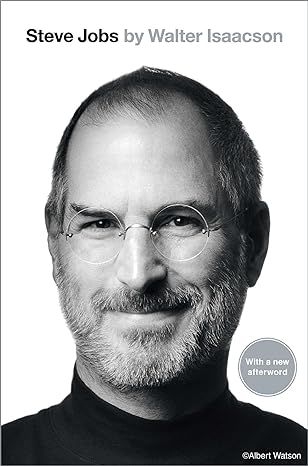
Steve Jobs
4.7
-
24,596
$1.78
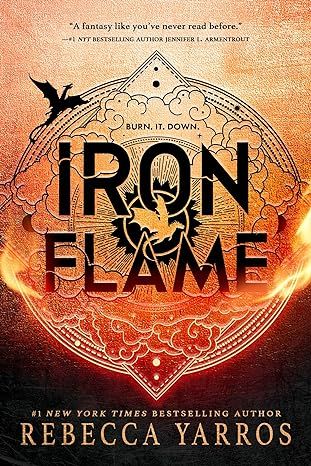
Iron Flame (The Empyrean, 2)
4.6
-
164,732
$14.99

A Court of Thorns and Roses Paperback Box Set (5 books) (A Court of Thorns and Roses, 9)
4.8
-
26,559
$37.99

Pretty Girls: A Novel
4.3
-
88,539
$3.67

The Bad Weather Friend
4.1
-
34,750
$12.78

Pucking Around: A Why Choose Hockey Romance (Jacksonville Rays Hockey)
4.3
-
41,599
$14.84

Start with Why: How Great Leaders Inspire Everyone to Take Action
4.6
-
37,152
$9.99
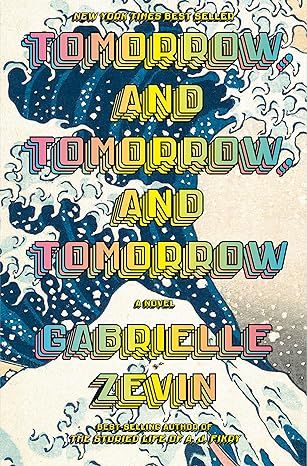
Tomorrow, and Tomorrow, and Tomorrow: A novel
4.4
-
95,875
$13.99

Weyward: A Novel
4.4
-
27,652
$11.99

Tom Lake: A Reese's Book Club Pick
4.3
-
37,302
$15.74

All the Sinners Bleed: A Novel
4.4
-
12,894
$13.55
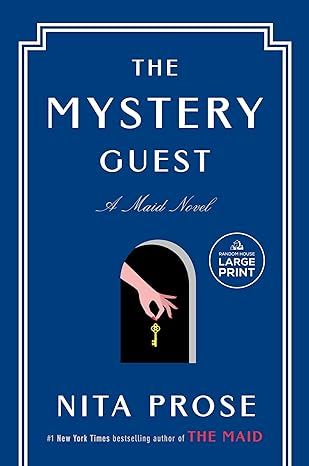
The Mystery Guest: A Maid Novel (Molly the Maid)
4.3
-
9,844
$14.99
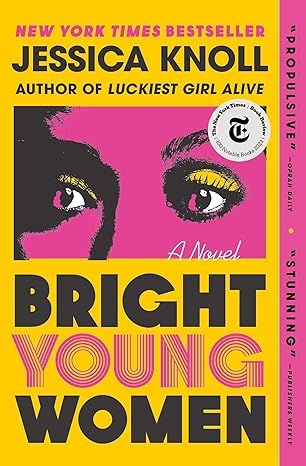
Bright Young Women: A Novel
4.2
-
8,485
$14.99

The Wager: A Tale of Shipwreck, Mutiny and Murder (Random House Large Print)
4.5
-
28,672
$14.99

Hello Beautiful (Oprah's Book Club): A Novel (Random House Large Print)
4.4
-
79,390
$14.99
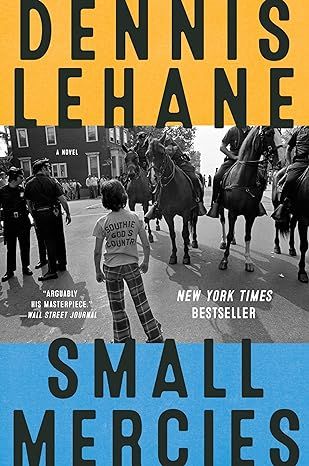
Small Mercies: A Detective Mystery
4.5
-
16,923
$10.00

Holly
4.5
-
31,521
$14.99

The Covenant of Water (Oprah's Book Club)
4.6
-
69,712
$9.24
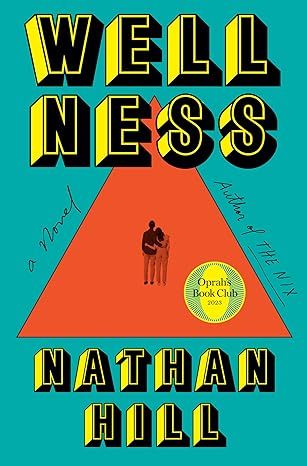
Wellness: A novel
4.1
-
3,708
$14.99
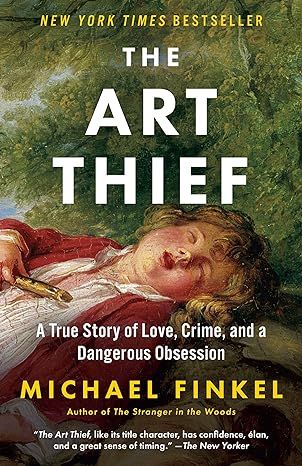
The Art Thief: A True Story of Love, Crime, and a Dangerous Obsession
4.3
-
4,805
$14.99

The Berry Pickers: A Novel
4.5
-
14,209
$14.99
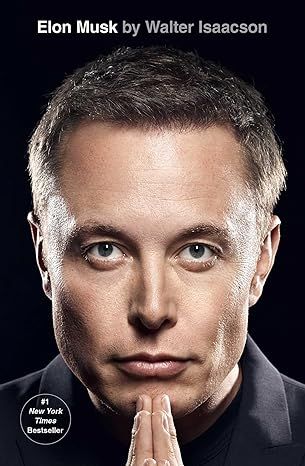
Elon Musk
4.7
-
15,272
$16.99

Just for the Summer
4.6
-
19,524
$11.99
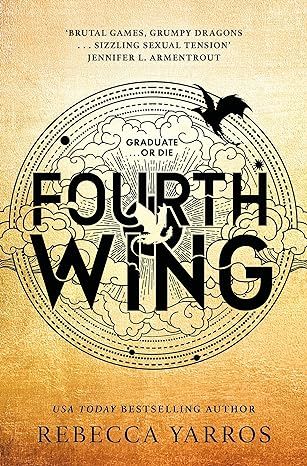
Fourth Wing (International Edition)
4.8
-
206,495
$7.95

Remarkably Bright Creatures: A Read with Jenna Pick
4.6
-
65,556
$15.80
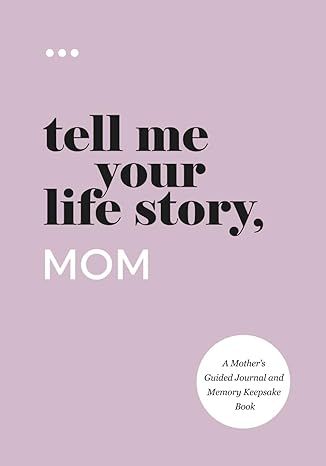
Tell Me Your Life Story, Mom: A Mother’s Guided Journal and Memory Keepsake Book (Tell Me Your Life Story® Series Books)
4.7
-
5,107
$11.24

